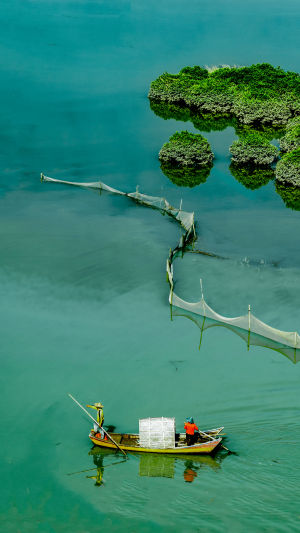Fisheries and aquaculture are two important sectors that play a crucial role in providing food and nutrition for the global population.
These industries involve the material transformation function of organisms in the waters to harvest various aquatic animals, algae, and plants in exchange for commercial value through fishing, breeding, processing, and marketing channels.
According to a recent report, the total global fisheries and aquaculture production reached 214 million tons in 2020, the highest level in history.
Of this, aquaculture production reached 88 million tons, accounting for 40.89% of the total global fisheries and aquaculture production.
The top five countries in terms of total fisheries and aquaculture production are China, Indonesia, Peru and the United States.
The increase in total production has greatly contributed to the development of the global fisheries economy, and international trade in fisheries and aquaculture products has grown significantly.
In 2020, the total global aquatic animal exports reached USD 151 billion, accounting for 11% of the global agricultural trade (excluding forestry).
The top three countries in the world in terms of total aquatic animal exports are China, Norway, and Vietnam, while the top three countries in terms of import value are the United States, China, and Japan.
However, as fisheries and aquaculture continue to expand, there is a need to promote more targeted and transformative changes to build a more sustainable, inclusive, and equitable fisheries and aquaculture industry.
A "blue transition" in the way aquatic food is produced, managed, traded, and consumed is necessary to achieve the UN Sustainable Development Goals.
There has been a long-standing debate over the development of freshwater aquaculture, which is said to be constrained by resources such as freshwater and land, while the scope for the expansion of mariculture is virtually unlimited.
However, recent life cycle assessment studies have found that both freshwater and marine aquaculture require more freshwater and land resources in feed production than are directly consumed by the aquaculture sector.
Therefore, some scholars have argued that both mariculture and freshwater aquaculture, which rely on bait feeding, have similar limitations in freshwater, land, and other resources.
At the same time, the environmental impacts caused by aquaculture mainly originate from the feed production process, and there is no significant difference between the environmental impacts of bait-fed mariculture and freshwater aquaculture in terms of climate change, biodiversity, and ecosystem services.
Despite these limitations, freshwater aquaculture can still contribute significantly to global food security because it has a comparative advantage over mariculture in terms of large-scale production of low-input, affordable aquatic products.
Most of the major freshwater-farmed fish are low trophic level filter-feeding and omnivorous fish, which are less difficult to reproduce artificially, adaptable to low dissolved oxygen and eutrophic water bodies, and require only simple techniques and equipment to carry out aquaculture production.
Furthermore, freshwater aquaculture can still exploit the production potential of the existing farming area and gradually increase the level of intensification, thus producing more aquatic products.
This can be achieved through the adoption of new technologies, such as recirculating aquaculture systems (RAS), which reduce the demand for water and land, increase production efficiency, and minimize environmental impacts.
Fisheries and aquaculture are vital sectors that contribute significantly to global food security and the economy. However, the expansion of these industries must be accompanied by sustainable practices that promote inclusivity, equity, and environmental conservation.
While both mariculture and freshwater aquaculture have limitations, the latter has a comparative advantage in the large-scale production of low-input, affordable aquatic products.
Therefore, the development of sustainable freshwater aquaculture practices, such as RAS, can greatly contribute to the achievement of the UN Sustainable Development





